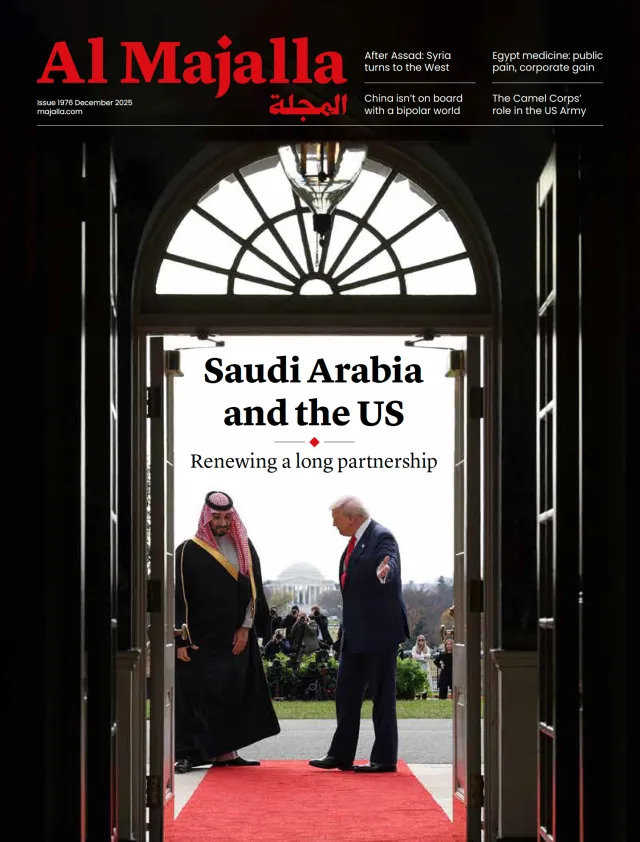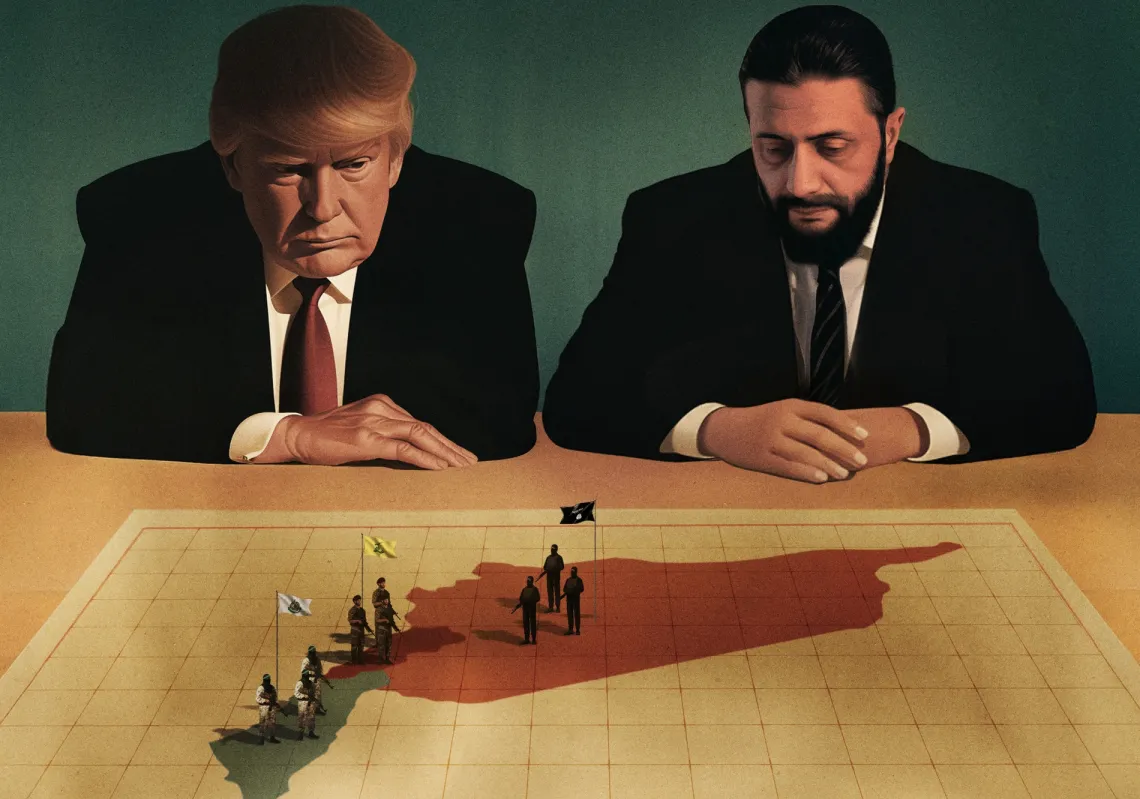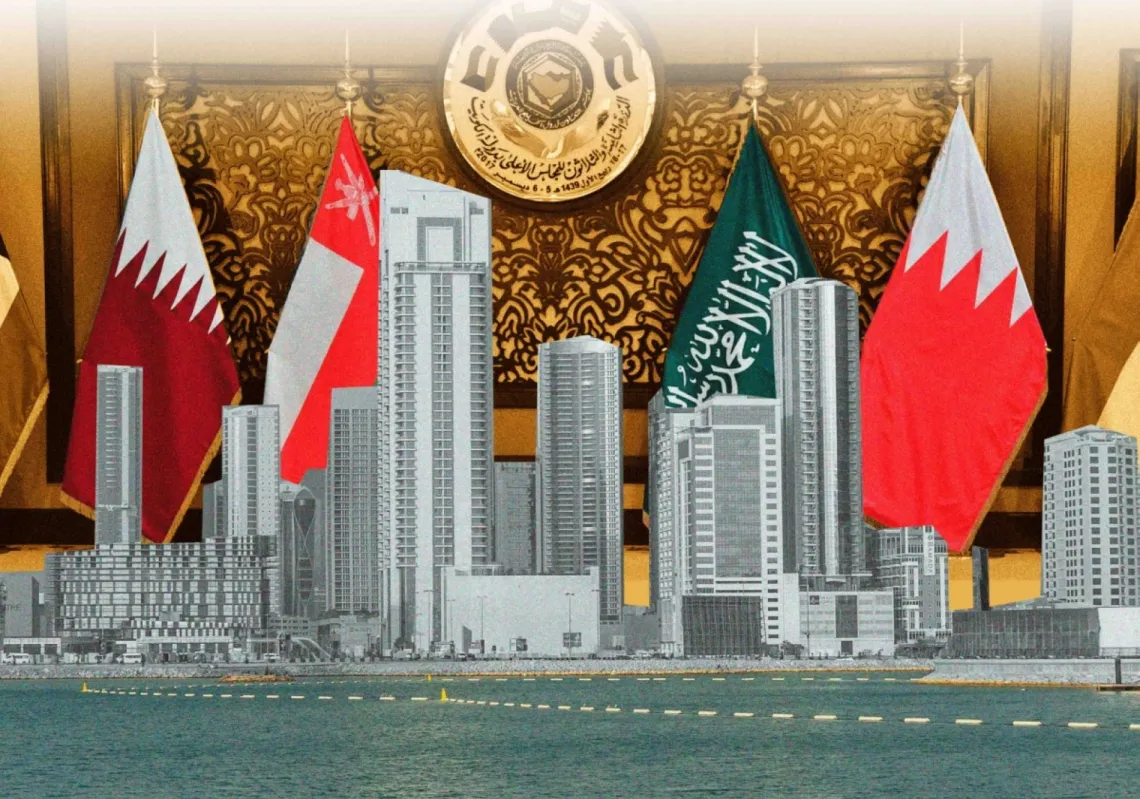On this day in history back in 1945, King Abdulaziz rewrote modern Arab history for the second time in his long and illustrious career. The primer was back in the 1920s when he united the tribes of Arabia and created the Kingdom of Saudi Arabia that we know today, while the second time was when he sat down for a one-on-one with US President Franklin D. Roosevelt on 14 February 1945. The meeting would last for five long hours onboard a US destroyer in the Suez Canal, producing a historic alliance between the two countries that would outlive both the Saudi king and US president.
The year 1945 was the second time that an American president came face-to-face with an Arab leader after the 1919 meeting between President Woodrow Wilson and Emir Faisal Ibn al-Hussein, the first post-Ottoman ruler of Syria. They met at the Paris Peace Conference after World War I, approximately one year and a half before Faisal was crowned king in Damascus.
Faisal was very weak at the time, desperately in need of international recognition, whereas in 1945, King Abdulaziz was at the height of his career when he was invited to confer with President Roosevelt. Unlike Faisal, who badly needed the Americans in 1919, it was the Americans who needed the Saudi king in 1945, seeking his support against the Axis Powers in World War II. Their British allies had explicitly asked all Arab and Muslim allies to suspend relations with Nazi Germany, which is precisely what Iraq did before an anti-British revolt in Baghdad sent the royal family fleeing.
Prime Minister Winston Churchill intervened militarily to abort the revolt and would do the same in Iran when its shah, Reza Pahlavi, refused to sever relations with the Germans. With Soviet support, the British would intervene militarily to bring him down in 1941.
Things were strikingly different with Saudi Arabia, however, given that neither its king nor his kingdom were creations of the West, giving the US and Great Britain very little leverage. King Abdulaziz was a political equal and they simply could not pressure him into taking any position that he saw as contradictory to Saudi Arabia's national interests. This explains why they began reaching out to him as early as 1943 when, on 18 February, Roosevelt said that Saudi Arabia was vital for US interests and, later that September, invited the king's son, Emir Faisal, to Washington, DC.

Setting conditions
Then came the 1945 summit, where King Abdulaziz put forth a series of conditions, among which was obstructing the Greater Syria project by Jordan and receiving a pledge from the US president to refrain from taking any decision pertaining to Palestine that ran contradictory to the interests of its Palestinian inhabitants.
He also pledged to support the Allied War effort, and in return, Roosevelt promised to provide the Saudi army with US military support. King Abdulaziz lived up to his side of the agreement, but it was the Americans who reneged after Roosevelt's passing on 12 April 1945. Under his successor, Harry Truman, unlimited support was given to the newly created state of Israel in 1948, which infuriated the Saudi king, although he continued to support the Allies until victory.
He also went on to support the Americans in the Cold War with the Soviet Union and became a bulwark against the spread of communism in the Arab world. After his own death in 1953, his son and successor, King Saud, would stand up to Nasserism, whereas consecutive Saudi monarchs would collaborate with the US against communism, revolutionary Khomeinism, Saddamism, and Iraqi expansionism after the 1990 invasion of Kuwait. They would once again side with the Americans in their war on terror and against Islamist fundamentalism after the 9/11 attacks on New York.
Ups and downs
Bilateral relations had their ups and downs during the second half of the 20th century, and at every single juncture, Saudi Arabia would prove, time and again, that although allied to the United States, it was never a puppet state for the Americans, nor a US creation.
For example, in 1956, the US was taken aback by King Saudi's oil embargo against its wartime allies, France and Great Britain. Despite little affection for President Gamal Abdel Nasser, King Saud put his country's full weight behind Egypt during the Suez War and incurred a national loss that reached a whopping $300mn.

His elder brother, King Faisal, did the same in 1973 when he put his country's full weight and used the oil embargo again in support of Egypt and Syria during the third major Arab-Israeli War. The Saudis would say no to the Americans during the 1982 Israeli invasion of Beirut and then again during the 2003 US invasion of Iraq.
That said, however, there were also periods of robust cooperation under President Ronald Reagan in the 1980s, then under President Bill Clinton in 1993-2001 and finally, under the first administration of President Donald Trump (2017-2021). This will likely resume with Trump's return to the White House, and he is apparently preparing to make Riyadh his first overseas destination, just like he did back in 2017.
Under former president Joe Biden, bilateral relations were icy due to Houthi attacks, his vigorous attempts at reviving the nuclear deal with Iran (even if it came at the expense of the Arabs), and more recently, his unwavering support for Israeli Prime Minister Benjamin Netanyahu during the Gaza War.
It was under Biden, however, that talks began on a mutual defence agreement with the US. That agreement returns to the bilateral agenda today but faces a slew of complicated regional issues, among which is President Trump's recent calls for 'owning Gaza' and moving its Palestinian population out so that he can turn it into a so-called "Middle East Riviera."
On another front, however, Saudi Arabia seems satisfied with the recent developments in Lebanon and Syria, which led to the defeat of Hezbollah in November 2024, followed by the fall of Bashar al-Assad in December.
Can the moderate Arab states talk Trump into abandoning his "Middle East Riviera" project? Their conditions are not much different from those of King Abdulaziz. For its part, Riyadh remains committed to combating terrorism just like the founding king was committed to fighting Nazism and Communism.
The Saudis still insist that no deal will pass at the expense of the Palestinians. The terms rejected by King Abdulaziz in 1945 will still be refused in 2025, with one major change between then and now: Saudi Arabia's diverse choices of political and financial investment. China is a formidable ally of Riyadh today, and so are the BRICS countries.
Meanwhile, the US need for Saudi Arabia has not changed; rather, it has increased tremendously, given the kingdom's economic and political weight and its role as a problem-solver not only in the Arab world but beyond. As far as Trump is concerned, he sees the world in terms of opportunity and interests and isn't driven by ideology. He is always ready to strike deals based on these two determining factors: opportunity and interest.
The Abdulaziz–Roosevelt meeting minutes are stored in the White House archives. It would be wise for Trump to revisit them before his upcoming visit to the region.












